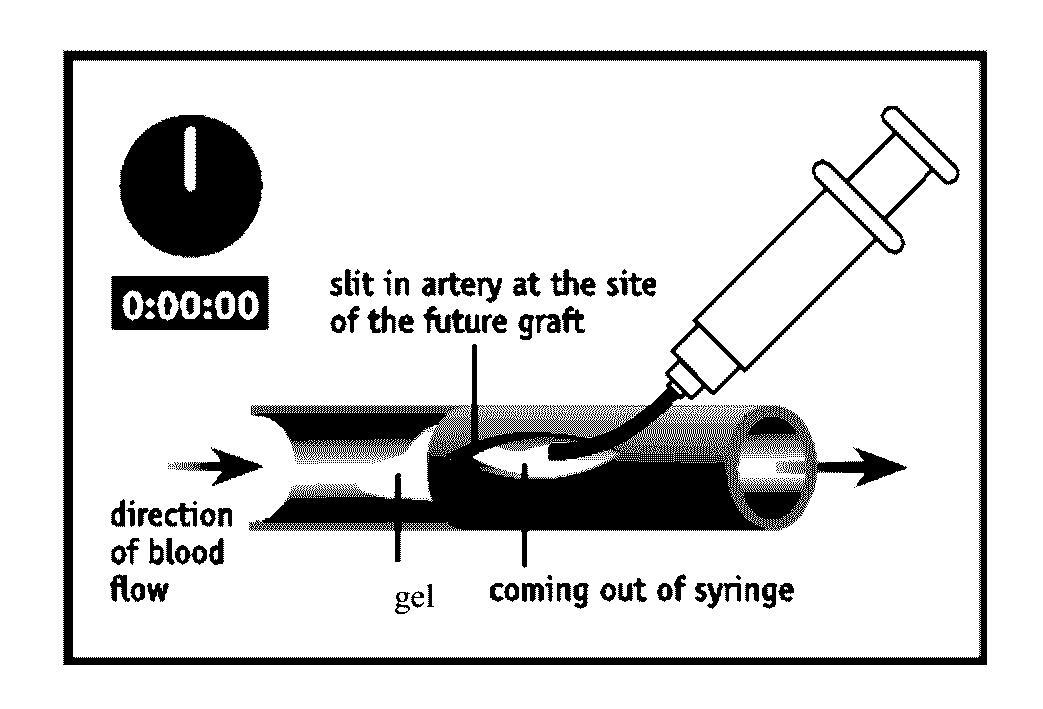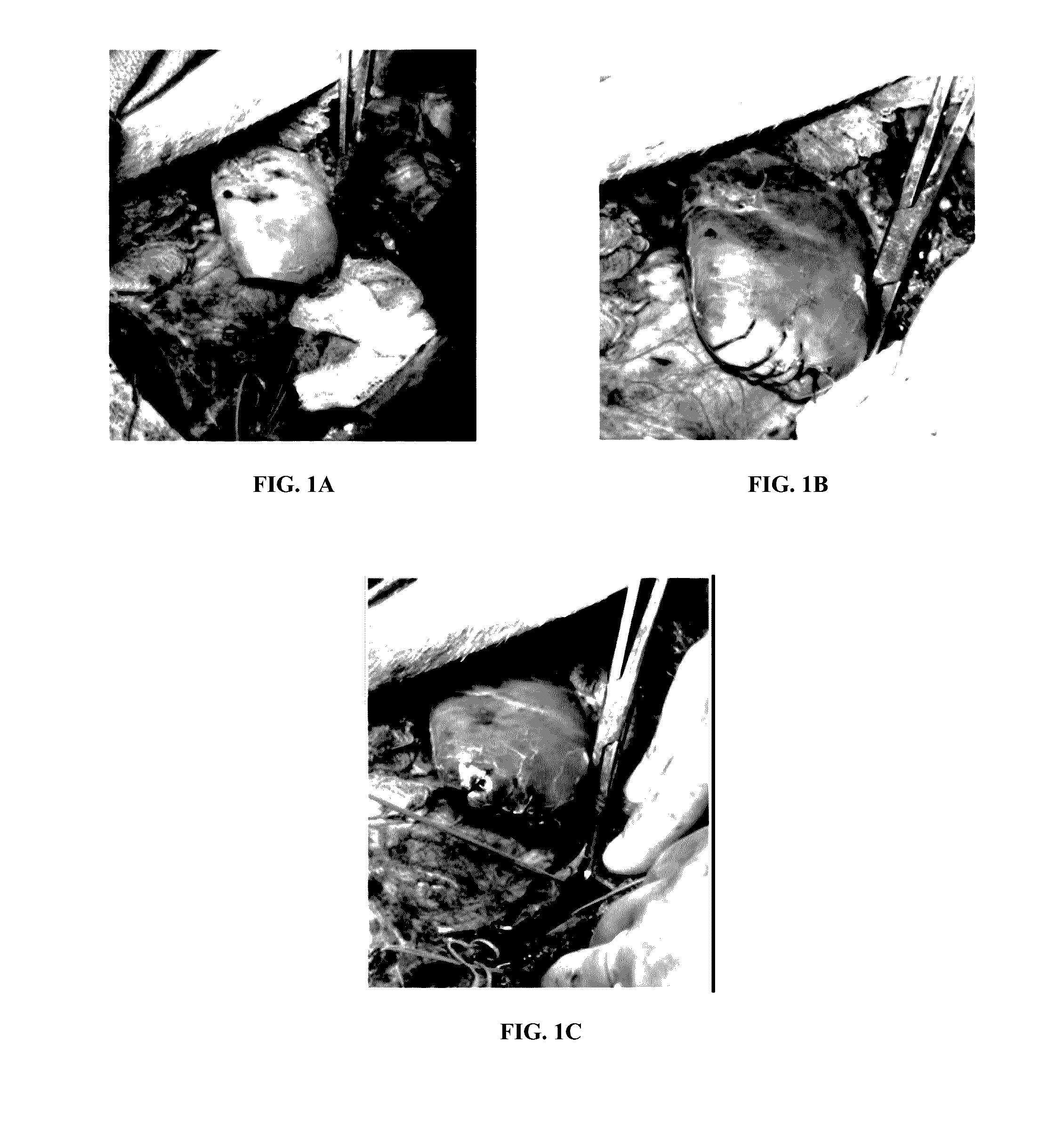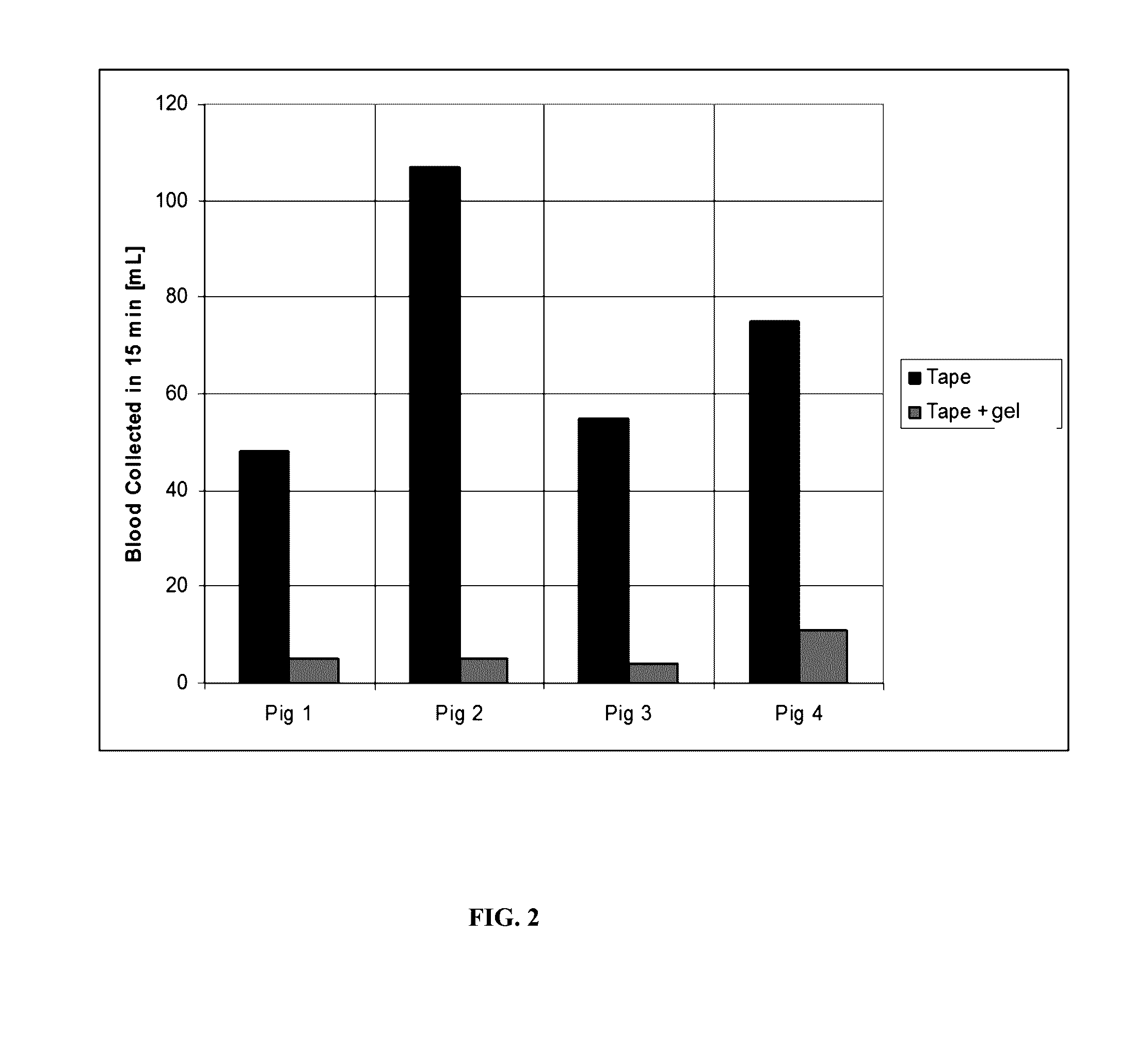Perfusive Organ Hemostasis
a technology of forced organs and hemostasis, which is applied in the direction of antibacterial agents, drug compositions, surgery, etc., can solve the problems of excessive blood flow in the renal parenchyma, and achieve the effect of restoring blood flow
- Summary
- Abstract
- Description
- Claims
- Application Information
AI Technical Summary
Benefits of technology
Problems solved by technology
Method used
Image
Examples
example 1
Partial Nephrectomy
[0254]Partial nephrectomy with internal renal vascular occlusion using a reverse thermosensitive polymer solution was attempted in 2 pigs. After the pig was intubated and sedated a right flank incision was performed from the rib cage to just above the pubic symphysis. Full exposure of the right kidney, the renal vein, renal artery, aorta and vena cava was obtained via a retroperitoneal approach. The aorta was canulated retrograde from the right iliac artery with the catheter tip lying about 15 mm proximal to the origin of the right renal artery. Twelve ml of the transient gel (20% poloxamer 407) was injected into the aorta, which was not sufficient to occlude the aorta, or the renal artery, but which lead to complete cessation of blood flow within the kidney itself. Fifteen minutes later, the kidney still had no circulation, and the lower pole was resected with no trace of bleeding. The resected end of the kidney was then oversewn and the kidney was cooled externa...
example 2
Renal Exposure
[0256]A study of renal exposure was similar to the above procedure. A catheter was inserted directly into the renal artery. A slow injection of 1.5 ml of the polymer produced ischemia identical to that described above. A heminephrectomy was performed in this case. Again, the surgery was largely bloodless, but after transecting a major renal artery branch in the pelvis of the kidney, a slight oozing of the polymer gel, followed by bleeding, was noted. This was readily and easily oversewn, allowing easy completion of the heminephrectomy and closure of the remaining kidney as described above. The remaining half kidney also resumed normal appearance and normal histology after transient cooling allowed re-liquefaction of the polymer. On microscopic examination in this case, no pathology was noted in either the resected or remaining half of the kidney.
example 3
[0257]Poloxamer 407 (486.0 g, lot number WPHT-543B), purchased from BASF Corporation, Mount Olive, N.J., was dissolved in deionized water (15,733 g). The solution was maintained at 0.1° C. and 2335.1 g of (NH4)2SO4 were added. The solution was equilibrated at 2° C. and after two distinct phases formed, the lower phase was discarded, and the upper phase (2060 g) was collected and weighed. Deionized water (14159 g) was added and the solution was equilibrated to 2° C. Next, 2171.6 g of (NH4)2SO4 were added with stirring. After the salt was dissolved, the solution was maintained at approximately 2° C. until two phases formed. The upper phase (3340 g) was isolated and diluted with 12879 g of deionized water. The solution was chilled to about 2.2° C. and 2062 g of (NH4)2SO4 were added. The phases were allowed to separate as above. The upper phase was isolated and extracted with 4 liters of dichloromethane. Two phases were allowed to form overnight. The organic (lower) p...
PUM
 Login to View More
Login to View More Abstract
Description
Claims
Application Information
 Login to View More
Login to View More - R&D
- Intellectual Property
- Life Sciences
- Materials
- Tech Scout
- Unparalleled Data Quality
- Higher Quality Content
- 60% Fewer Hallucinations
Browse by: Latest US Patents, China's latest patents, Technical Efficacy Thesaurus, Application Domain, Technology Topic, Popular Technical Reports.
© 2025 PatSnap. All rights reserved.Legal|Privacy policy|Modern Slavery Act Transparency Statement|Sitemap|About US| Contact US: help@patsnap.com



